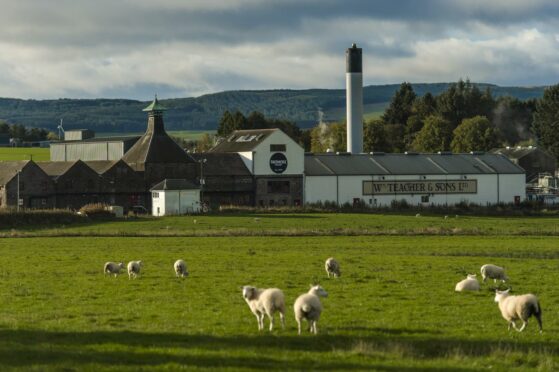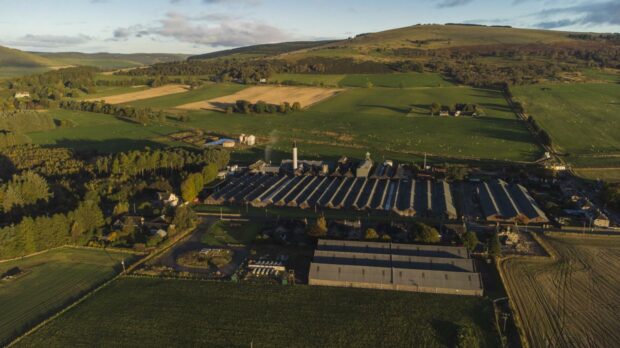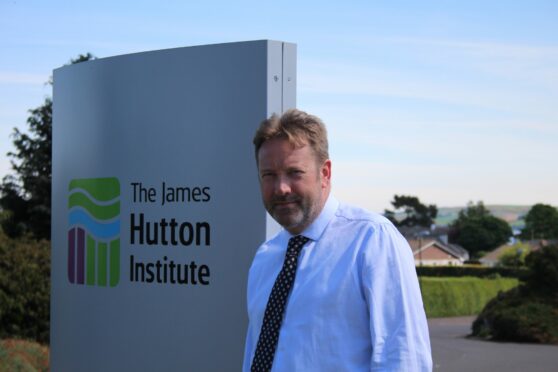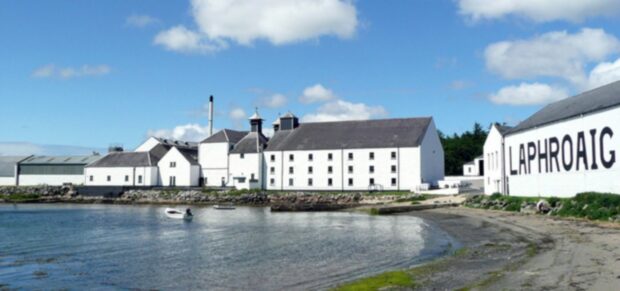The first stage of a new £3million peatland restoration and conservation programme by global drinks giants is due to start near Ardmore Distillery, in Aberdeenshire, next month.
US firm Beam Suntory and its Japanese parent, Suntory Holdings, have set a target of restoring and conserving more than 3,000 acres in Scotland by 2030 – enough to produce the amount of peat used every year to make their Scotch whiskies.
The firms’ long-term Peatland Water Sanctuary initiative, at sites in the north-east, on the island of Islay and at Clydebank, will also involve watershed conservation projects.
In the first pilot phase, work to restore 37-acres of peatland on Knockandy Hill, near the Ardmore single malt distillery, at Kennethmont, will get under way in the coming weeks.
The drinks firms are working with the Aberdeen-based James Hutton Institute (JHI), which is assisting with the research, planning and execution of the project, and the land owners, Forestry and Land Scotland.
Alistair Longwell, senior manager in Beam Suntory UK’s Scotch distillation and maturation operations, said three years of planning had already gone into the project at Ardmore, with the aim of restoring up to 173-acres there by 2024.
Mr Longwell added that the project would bring environmental benefits for the wider area.
Professor Colin Campbell, chief executive of the JHI, said the Peatland Water Sanctuary initiative was “vital to restore and protect one of Scotland’s most iconic habitats.”
“These natural assets are essential for sustaining one of Scotland’s most important industries, and it is truly a pleasure to work with partners who have such a well-developed philosophy around the protection of our natural environment.”
Forestry and Land Scotland chief executive, Simon Hodgson, said: “It is a great example of how business and land management organisations can work together and is a welcome addition to our growing suite of corporate partnerships.”
Projects to follow on Islay and at Oldmeldrum
Initial assessments for further projects are under way on Islay, in the Inner Hebrides, where Beam Suntory’s Bowmore and Laphroaig distilleries are located.
Potential watershed activities are also being planned near Glen Garioch Distillery, at Oldmeldrum, and Auchentoshan Distillery, at Clydebank.
The drinks firms said the initiative aligned with industry body the Scotch Whisky Association’s (SWA) environmental commitments, launched earlier this year, as well as their own sustainability strategies.
David Hunter, chief supply chain officer at Beam Suntory, said: “As part of our Proof Positive sustainability strategy, we believe it’s our responsibility to make a positive impact on the environment in which we operate, which is why we are committing to restoring and conserving as much peat as we harvest by 2030, as well as conserving crucial watersheds across Scotland.
“By protecting peatlands and preserving local watersheds, we will also help to enhance and ensure the production of the highest quality whisky in Scotland for future generations.”
Beyond 2030, the companies aim to restore twice the volume of peat harvested to make its whiskies by 2040.
Earlier this year it was announced the Johnnie Walker whisky brand, owned by international drinks giant Diageo, was funding work to preserve a severely degraded area of peatland in the Abernethy Nature Reserve, in the Highlands.
READ MORE: How do you restore peatland?



